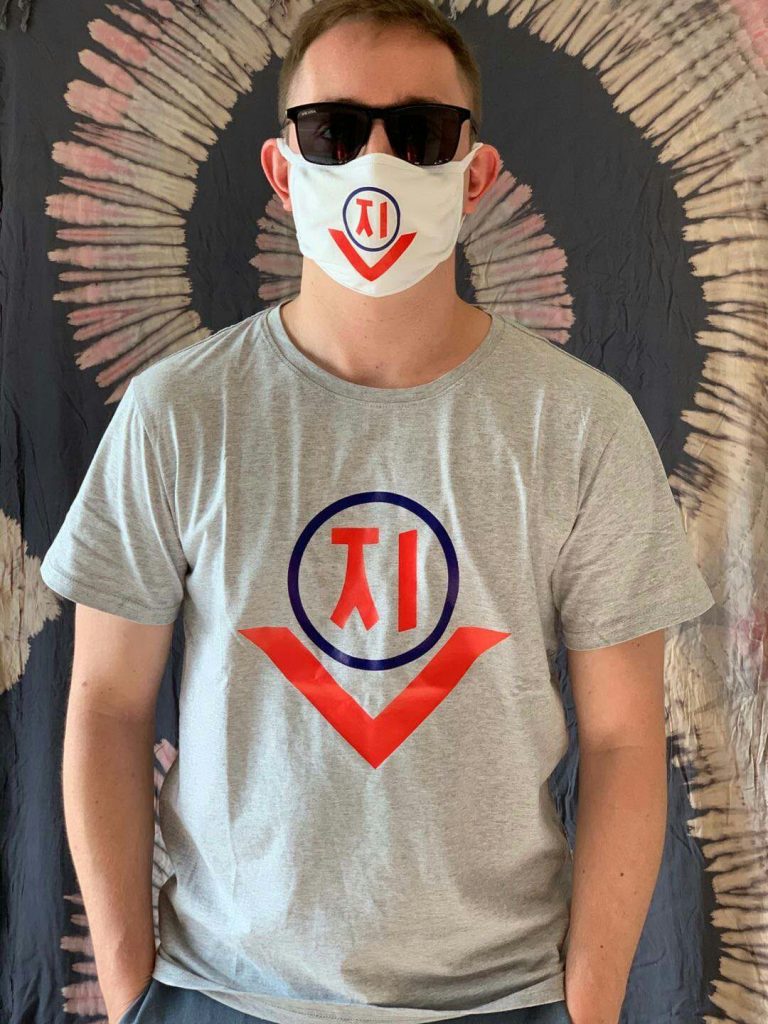Introduction
The Pyongyang Metro (평양지하철도) is an iconic attraction most tourist groups visit during their stay in Pyongyang. The Pyongyang Metro is a living and breathing organism of the city. Although it has incredibly vibrant and charming characteristics, it can also be rather intense during peak hour with an average of 300,000 to 600,000 passengers each day. It’s certainly one of the major highlights for many foreign visitors whilst visiting North Korea.
The metro system is considered the deepest metro in the world, buried 100 meters below the surface. It consists of two lines, the Chollima line and Hyoksin line with 16 subway stations in total. It operates solely on the west side of Pyongyang – within the more developed districts. The depth of the metro helps keep the temperature to a comfortable level of 20°C (68°F) throughout the year, as the local Korean guides say “cool in summer and warm in winter”.
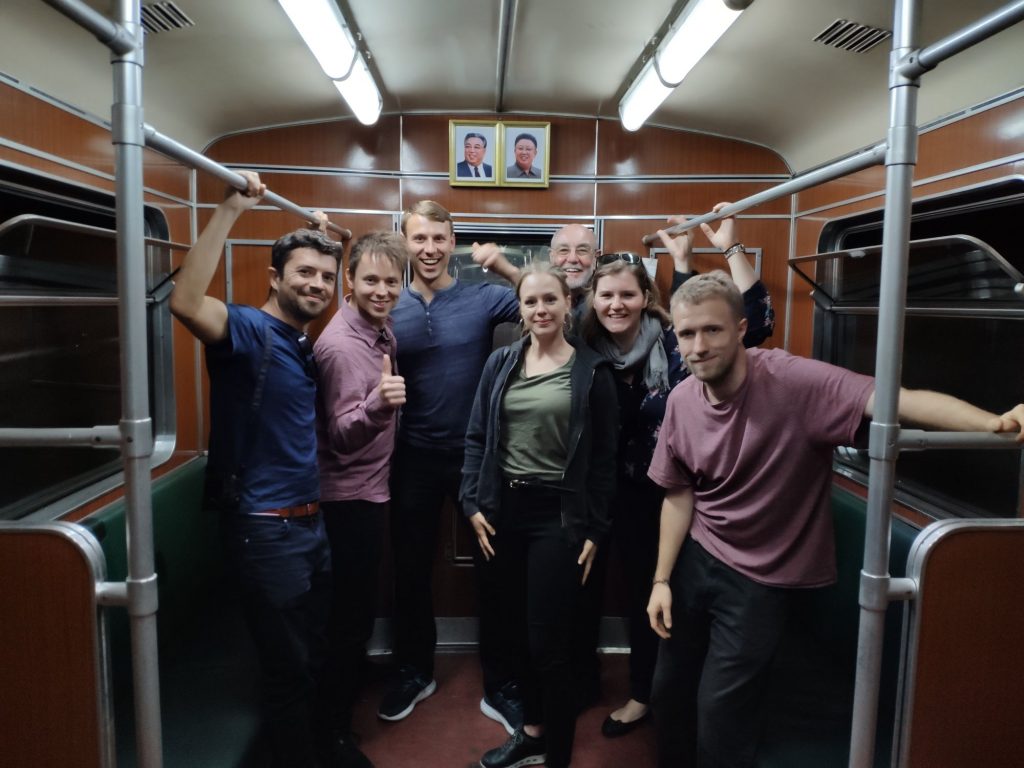
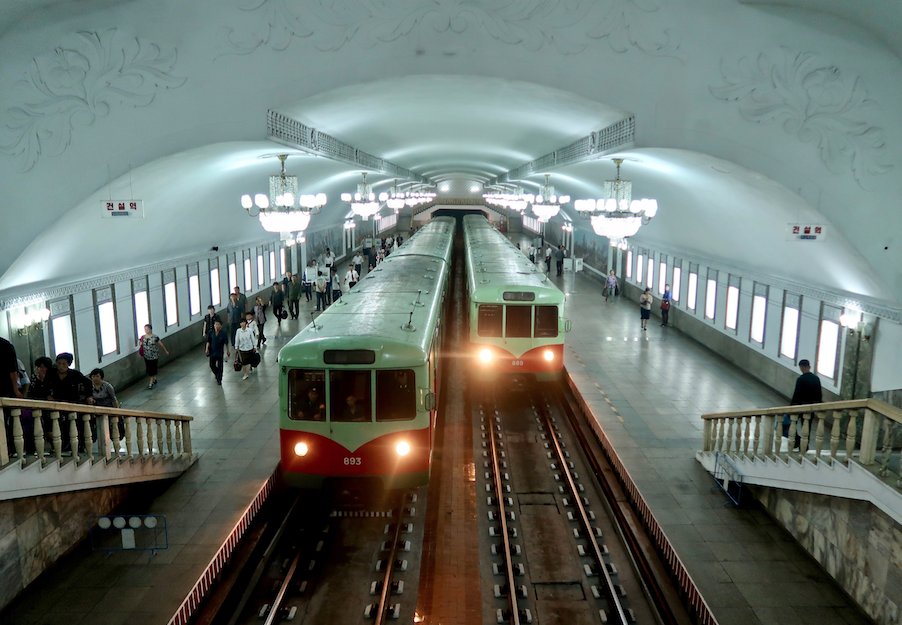
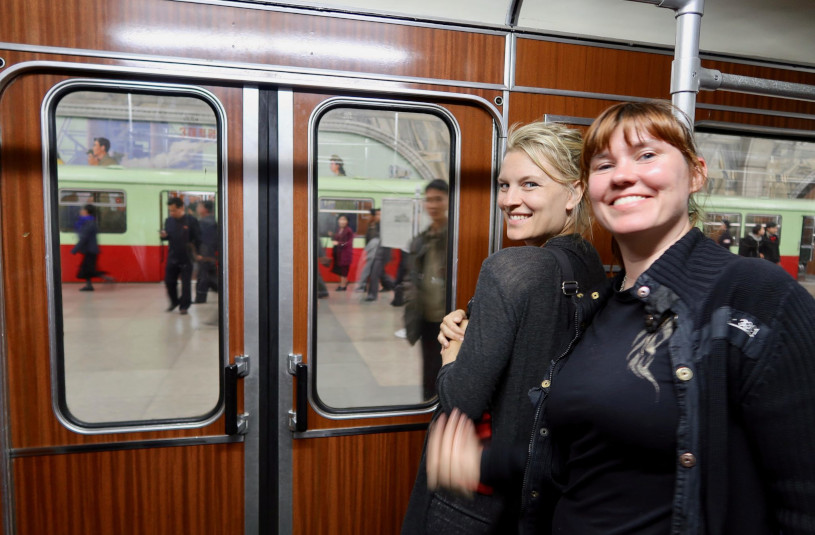
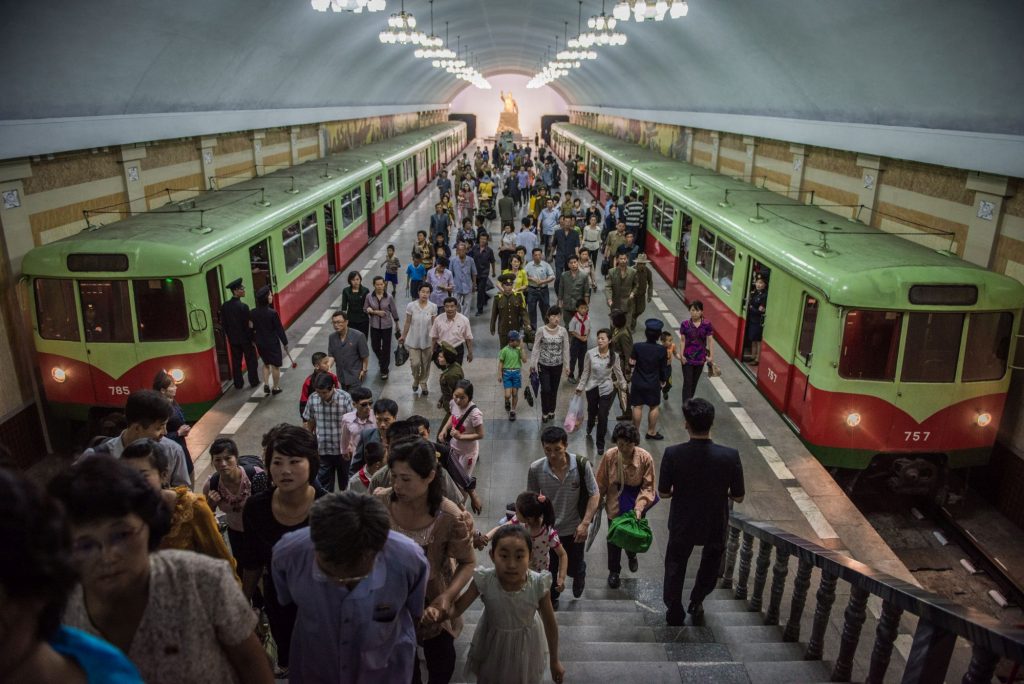
The North Koreans praise their own efforts in constructing their metro system with the assistance of China and the Soviet Union which is why the architecture and style is very similar to the Moscow Metro in Russia or the Kyiv Metro in Ukraine. Fun fact: the deepest metro station in the world is in Kyiv, Ukraine.
The stations have been uniquely named after revolutionary feats during the liberation of Korea from the Japanese after World War II, as well as the Korean War. The names of some of the Pyongyang metro stations translate into English as Reunification, Rejuvenation, Glory, Triumph, Golden Fields, Red Star, Liberation and Construction for example. More can be viewed in the Pyongyang Metro Map below. The Mansudae Art Studio was in charge of all the elaborate mosaics, portraits, chandeliers, and sculptures to match the theme of the station.
The Pyongyang subway system was also built with a second purpose of being a bunker to shelter citizens from any possible attacks on the city. This intention is only noticeable once stepping off the descending escalators and walking towards the platforms. You’ll pass three separate blast shields built behind the wall and ceiling covered by removable metal sheeting. Each station we have explored has this same noticeable design near the entrance and exit of the station.
History of Pyongyang Metro
In 1968 construction on Chollima line 1 which first only consisted of 6 metro stations begun. In 1973 it was opened to the public for use and costing only 5 Korea Won to ride no matter how far the travel distance, which is less than 1 US cent thus making it the cheapest subway system in the world. The cost has not changed and is still in effect today!
In the early 1970s construction began on Hyoksin line 2 and was opened in 1975 to the public.
During the 70s and 80s, Pyongyang’s rolling stock consisted mostly of Chinese designed and made cars in Beijing. This was later sold back to Beijing subway as the Koreans imported metro cars from East and West Berlin from 1997.
The German’s cleaned the metro cars from vandalism and graffiti made to the walls and seats. The Koreans were given the option to replace the windows on the subway cars as they too were scratched with vandalism. This offer was declined as it would have added further costs, and you can still see German graffiti on the Pyongyang metro today. The North Koreans fitted portraits of Kim Il Sung and Kim Jong Il in each carriage as well as connecting the speakers to Pyongyang underground radio station with hourly updates and propaganda music.
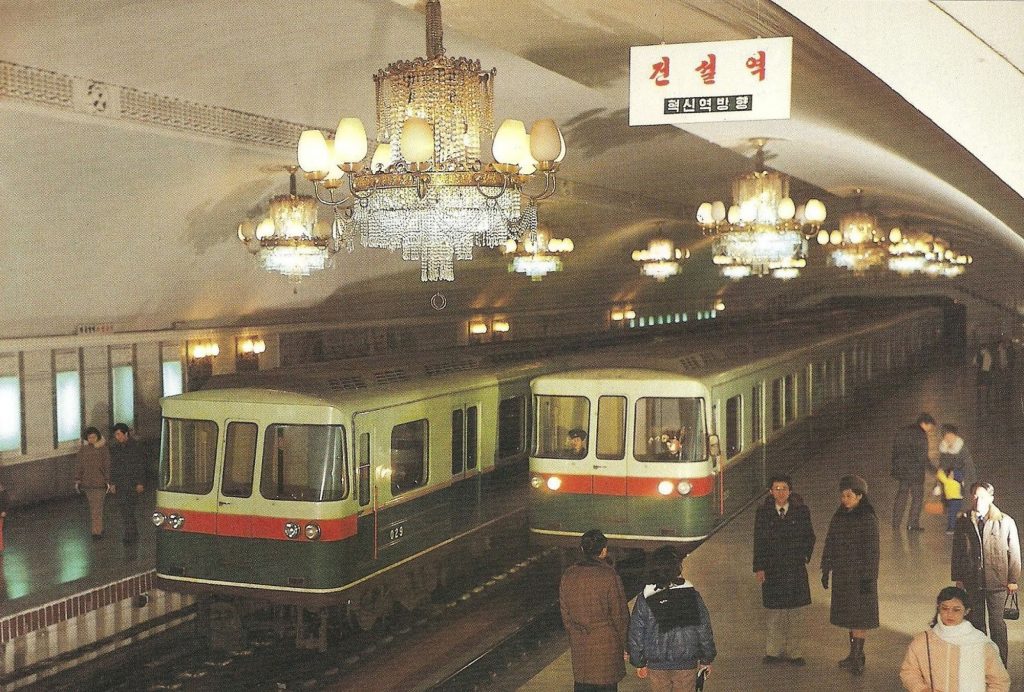
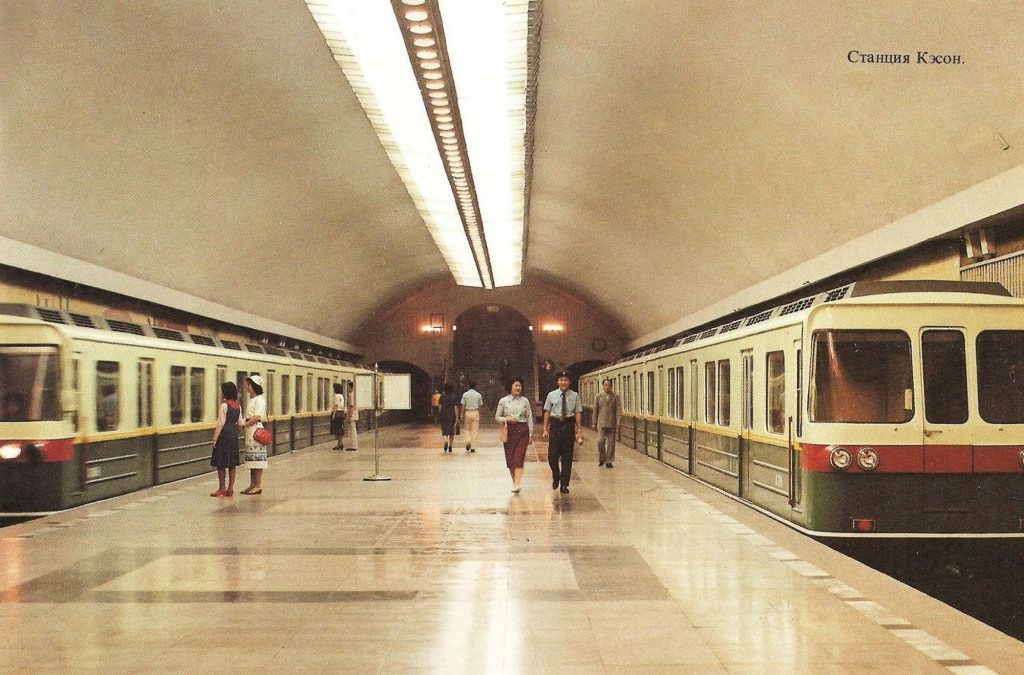
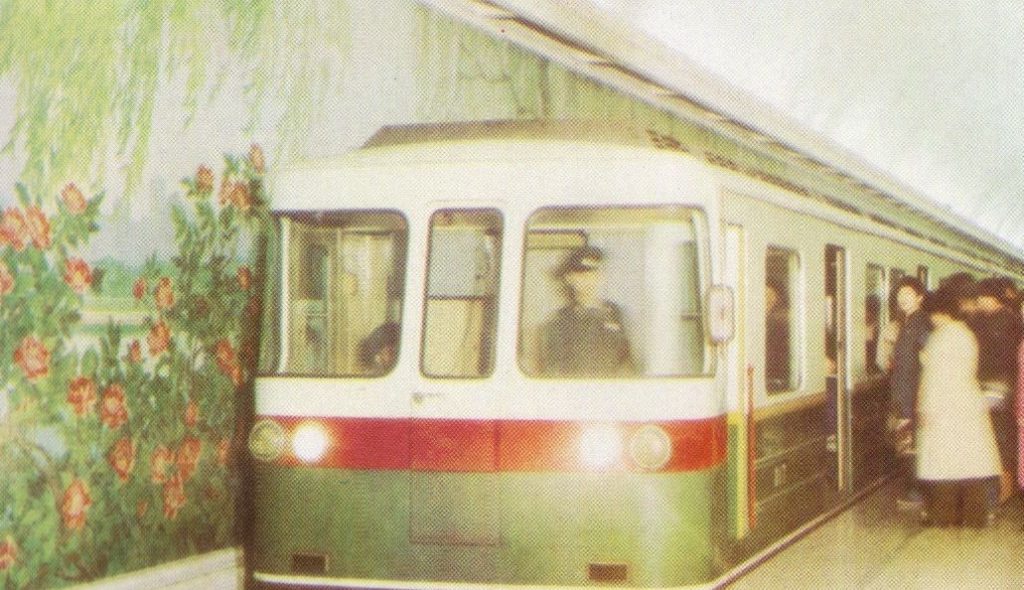
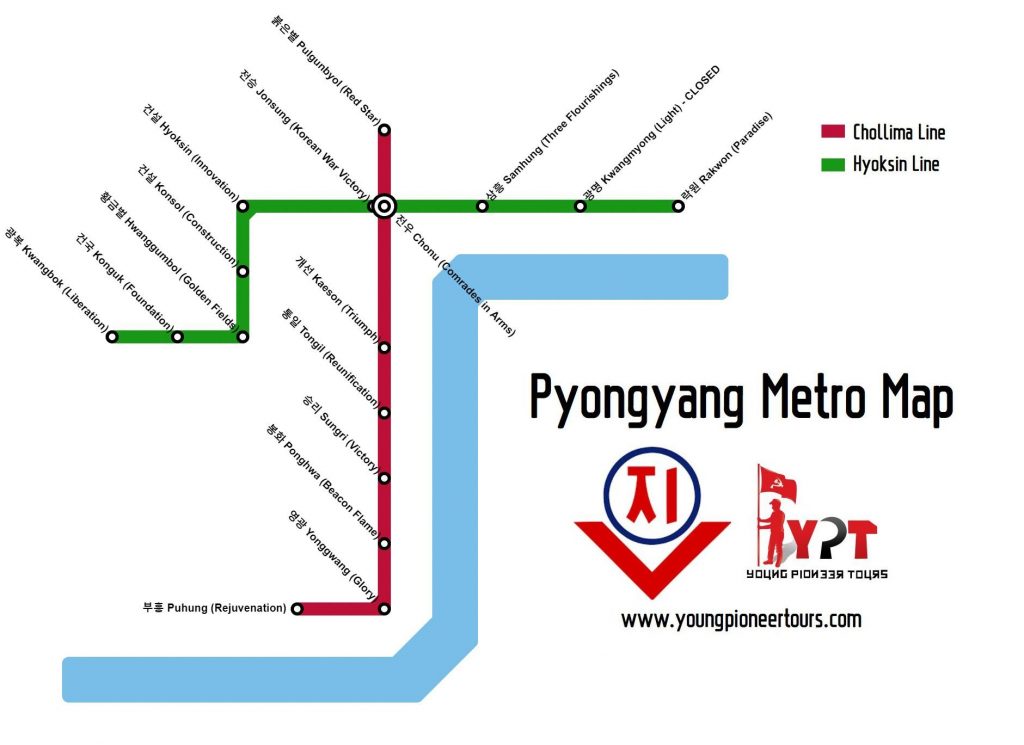
In 1987 two more stations were opened on line 1, Rejuvenation station located near the Munsudae Art Studio and Glory station located underneath the Pyongyang Railway Station. These two stations are considered to be the largest and grandest stations on the metro.
In 1994, Light station on line 2 was closed for all public use. The underground station was previously used to access the Kumsusan Assembly Hall which is situated directly above. The Assembly Hall was then renovated and renamed to the Kumsusan Memorial Palace where Kim Il Sung’s body laid in state for public viewing. The station has remained closed ever since but the platforms can be seen when passing on the metro. Out of respect to both Kim Il Sung and Kim Jong Il the train slows when passing the station.
In 2010 the National Tourism Agency of the DPRK permitted tourists to ride six stations instead of only two. In 2014 it was allowed to fully explore the entire metro which allowed us to run our annual Entire Pyongyang Metro tour in September.
In 2015, the DPRK designed and assembled their very own modern train to operate on the metro. The carriages were fitted with LCD screens displaying arrival station information and playing DPRK documentaries during journeys such as apples grown in Kangwon province or soap produced at Pomhyangi Cosmetics Factory.
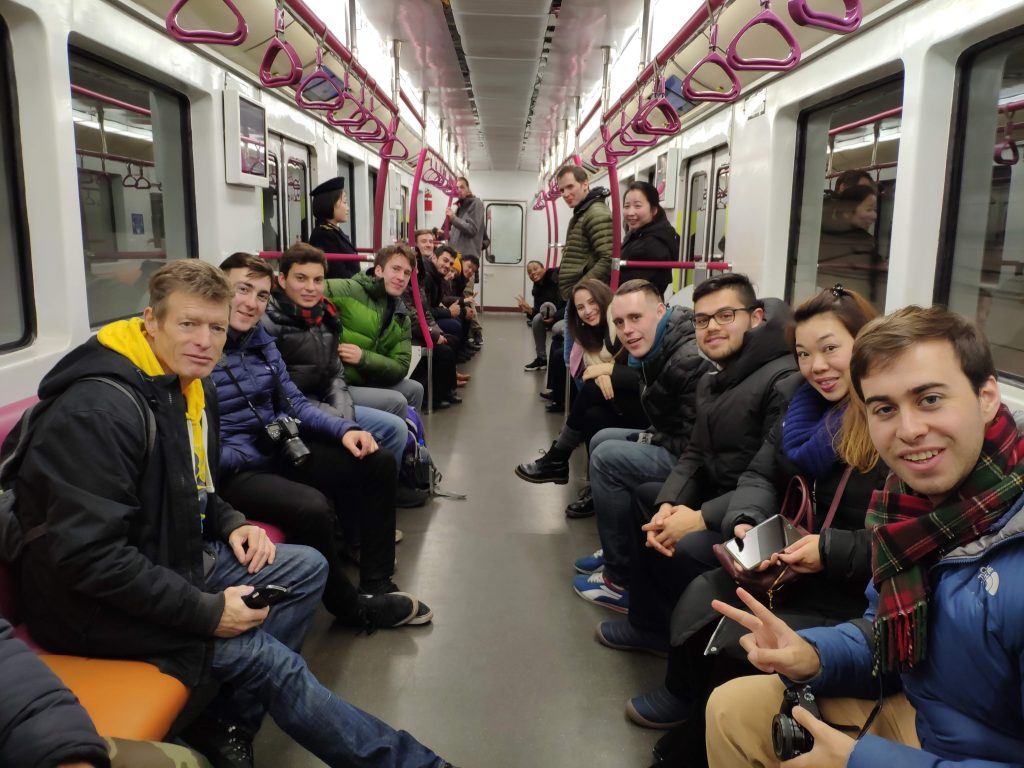
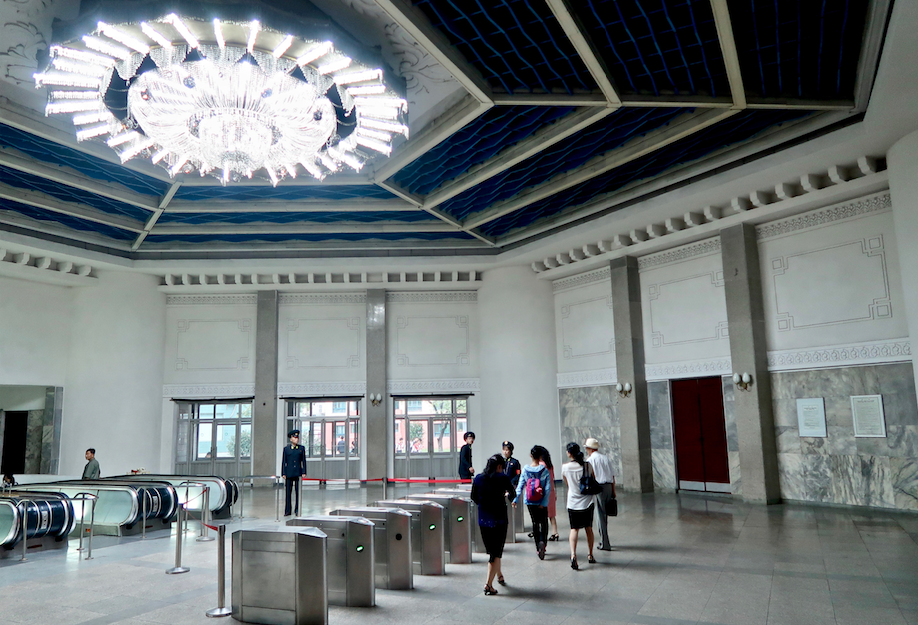
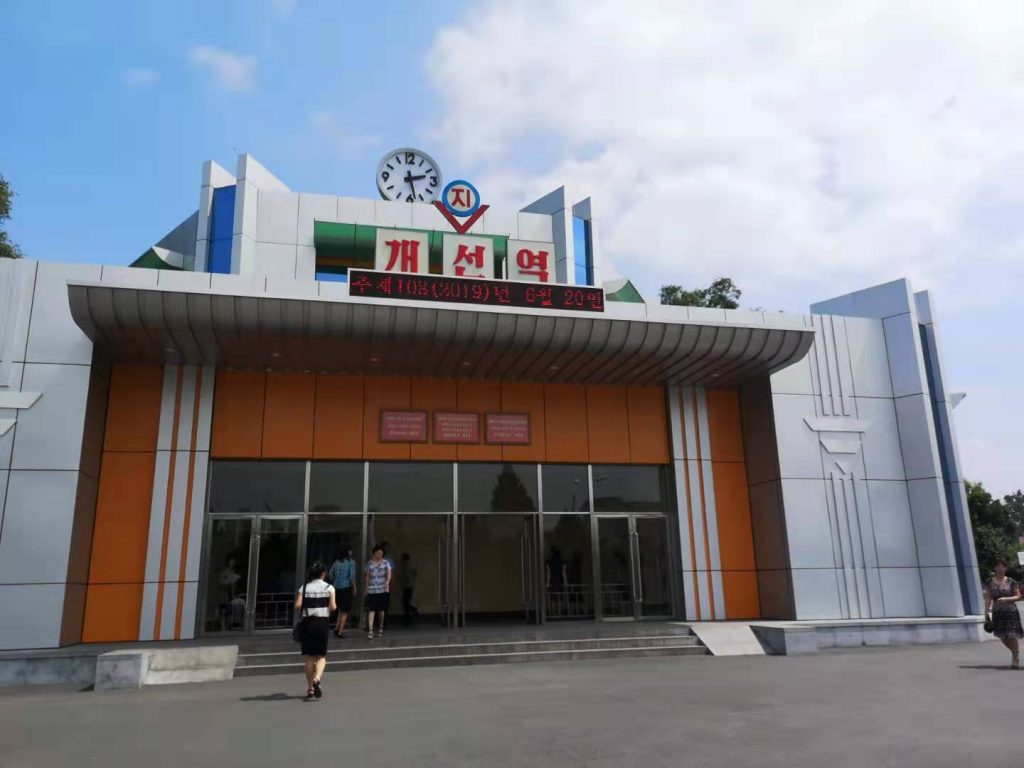
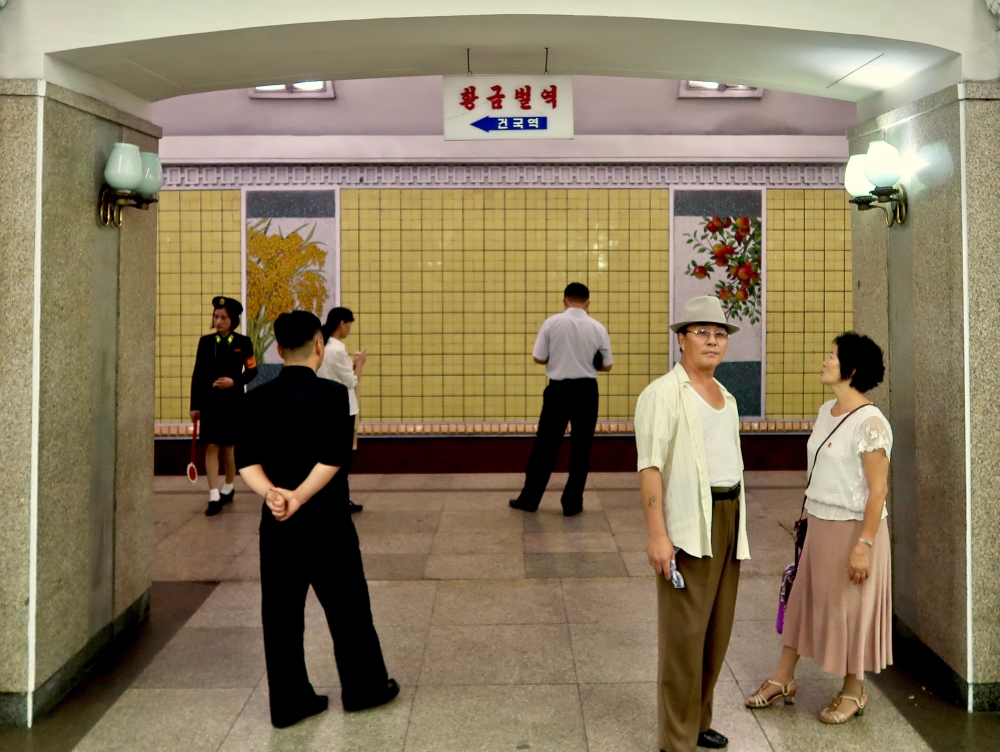

They currently have only one modern train which has been dubbed the “prototype” and if you’re lucky enough you’ll see it pass on line 1 or have the chance to ride it. There is a red plaque on the side of the train signifying when Kim Jong Un tested the train himself when it was first operated.
In 2019 Triumph and Reunification station on line 1 was reopened to the public after being completely renovated.
In 2020, Comrades in Arms station and Korean War Victory station, the two stations that allow passengers to transit between line 1 and 2 was renovated.
Experience
Riding the metro is an experience within itself. Whether you’re in Pyongyang for a day or longer, boarding the metro is one of the very few times you can openly mingle with North Koreans. The locals are a mix of office workers, grandparents, families, school students, or military men and women.
They usually tend to be a little shy at first seeing foreigners riding along with them, but some simple ‘breaking the ice’ techniques can be used to get them chatting. School and university students usually know a little English or Chinese and are well up for a conversation to practice their oral skills.
Most old Korean couples, if they’ve had a bit to drink which is usually on a Sunday, will be very comfortable to have a chat to you in Korean. Your YPT guide and local Korean guides will help translate. Some of the funnier questions I’ve been asked is “Why aren’t you married? You’re old!” from an older gentleman and “do you have Pyongyang cold noodles in your country?” from a student.
During your tour in North Korea you’ll most likely board the train at Rejuvenation station. This is a terminus station where most of the elderly locals will ride the train to if they’re one or two stations away to secure a seat if they’re travelling to the other end of line 1. This usually gives the perception to tourists that seeing locals getting off and straight back on the metro heading the other way proves the Pyongyang Metro is fake. I tell my tourists ‘the metro is what you make of it’. Engagement is the key. This is your chance.
And despite the DPRK being closed to tourism, the Pyongyang Metro is still going strong, alas with people wearing masks we assume. When the DPRK does reopen though we will be back, seeing every station.
